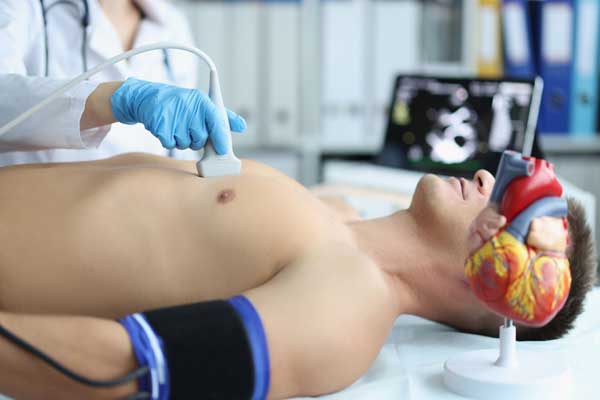Welcome to this comprehensive guide to the cardiovascular system. In this article, we will delve into the intricate anatomy and essential functions of the cardiovascular system. This knowledge will provide you with a solid foundation to understand the heart, blood vessels, and their roles in maintaining our health.

The Cardiovascular System: A Vital Overview
The cardiovascular system, often referred to as the circulatory system, plays a pivotal role in the functioning of our bodies. It is responsible for pumping blood throughout our system, delivering oxygen and essential nutrients, removing waste products, and facilitating the distribution of hormones and immune components.
At its core, the cardiovascular system consists of four key components:
1. The Heart: The Heart serves as the central pump responsible for circulating blood throughout the body. It consists of four chambers, four valves, and a complex conduction system that coordinates its rhythmic contractions.
2. Blood Vessels: Blood vessels are the conduits through which blood flows, branching out from the heart to various parts of the body and then returning. These vessels include arteries, arterioles, capillaries, venules, and veins.
3. The Conduction System: The heart’s conduction system is a network of electrical pathways that regulates the heartbeat. It ensures synchronized contractions of the heart’s chambers, allowing for efficient blood circulation.
4. Coronary Circulation: The coronary arteries supply oxygen-rich blood to the heart muscle itself, ensuring its proper function. Understanding this circulation is crucial for comprehending heart health.
The Heart’s Anatomy: A Complex Structure
The heart is a marvel of nature, but its intricate three-dimensional structure can be challenging to represent accurately on paper. It comprises four chambers, four valves, several great vessels, and various septa that separate these chambers. To gain a better perspective, let’s break down its components:
The Four Chambers: The heart has two atria (right and left) and two ventricles (right and left). The right atrium receives deoxygenated blood from the body, while the left atrium receives oxygenated blood from the lungs. The right ventricle pumps blood to the lungs for oxygenation, and the left ventricle propels oxygen-rich blood to the rest of the body.
The Four Valves: The heart’s valves ensure one-way blood flow. They include the tricuspid and mitral (bicuspid) valves separating the atria from the ventricles and the pulmonary and aortic valves regulating blood flow out of the ventricles into the pulmonary artery and aorta, respectively.
Great Vessels: These include the superior and inferior vena cava, the main pulmonary artery, the aorta, and the four pulmonary veins, all of which play crucial roles in blood transport.
Interventricular and Interatrial Septa: These septa separate the ventricles and atria from each other, ensuring efficient blood circulation and preventing mixing of oxygenated and deoxygenated blood.

The Heart’s Conduction System: Orchestrating the Beat
The heart’s rhythmic contractions are orchestrated by its conduction system. This intricate network ensures that electrical impulses travel through the heart, triggering coordinated contractions. The primary components of this system are:
Sinoatrial Node (SA Node): Often referred to as the pacemaker of the heart, the SA node initiates electrical impulses. It’s located in the right atrium and sets the heart’s pace.
Atrioventricular Node (AV Node): Positioned within the interatrial septum, the AV node acts as a gatekeeper, allowing signals to pass from the atria to the ventricles. It ensures a brief delay, allowing time for ventricular filling.
Bundle of His and Purkinje Fibers: These components convey the electrical signal rapidly to the ventricles, resulting in synchronized contractions that efficiently pump blood.
Understanding this conduction system is essential for comprehending how the heart maintains its precise rhythm.
Blood Vessels: The Body’s Transport Network
Blood vessels are the intricate highways that facilitate the circulation of blood throughout the body. They are categorized into five types:
1. Arteries: Thick-walled and muscular, arteries carry oxygenated blood away from the heart to various body parts.
2. Arterioles: These small branches of arteries regulate blood flow to capillaries, playing a crucial role in controlling blood pressure.
3. Capillaries: Microscopic vessels with a single layer of endothelial cells, capillaries facilitate the exchange of gases, nutrients, and waste products between the bloodstream and surrounding tissues.
4. Venules: Venules collect blood from capillaries and gradually merge into veins.
5. Veins: Thinner-walled than arteries, veins transport deoxygenated blood back to the heart. They also serve as a reservoir for blood volume.
Understanding this vascular system’s complexity is essential for appreciating how blood reaches every cell in our bodies.
Histology of the Heart: A Microscopic Perspective
The heart’s microscopic structure involves three layers:
1. Endocardium: A thin inner layer primarily composed of endothelial cells, similar to those lining blood vessels.
2. Myocardium: The thick, muscular layer of the heart, consisting mainly of cardiomyocytes. These cells contract rhythmically, driving blood circulation.
3. Epicardium: Also known as the visceral pericardium, this layer covers the heart’s outer surface and is vital for reducing friction during heartbeats.
Conclusion
In this comprehensive overview, we’ve delved into the intricate anatomy and vital functions of the cardiovascular system. By understanding the heart’s structure, the conduction system’s role, the intricate network of blood vessels, and the microscopic histology, you’ve gained valuable insights into this complex system that keeps us alive. In upcoming articles, we’ll explore specific cardiovascular topics in more detail.
Stay tuned for a deeper dive into the world of cardiology!
